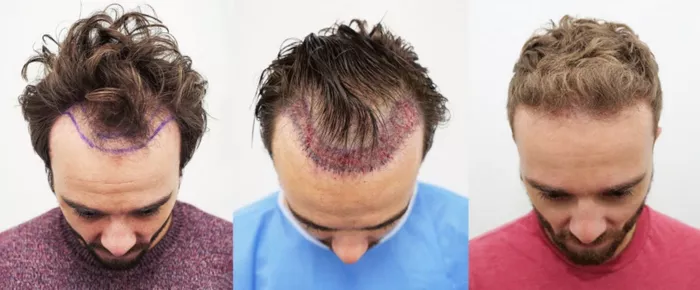Embarking on a hair transplant journey is a significant decision, and individuals often have questions about the process, including the duration of shedding after the procedure. Hair shedding is a normal part of the post-transplant experience and can be a source of concern for patients. In this article, we’ll explore the timeline and factors influencing hair shedding after a hair transplant, providing insights to help individuals navigate this phase with confidence.
The Hair Growth Cycle
Before delving into shedding post-transplant, it’s essential to understand the natural hair growth cycle. Hair goes through three phases: anagen (growth), catagen (transition), and telogen (resting). The majority of our hair is in the anagen phase at any given time. However, after a hair transplant, the implanted follicles experience a disruption in their growth cycle, leading to a temporary shedding phase.
Immediate Post-Transplant Shedding
After a hair transplant, patients may notice an initial shedding of the transplanted hair within the first few weeks. This shedding is a normal part of the healing process and is known as “shock loss.” The trauma of the transplant procedure can temporarily interrupt the growth cycle of the transplanted hairs, causing them to enter the resting phase.
Timeline for Shedding After a Hair Transplant
The duration of shedding after a hair transplant can vary among individuals, but there is a general timeline that most patients can expect:
1. Initial Shedding (0-4 Weeks): The immediate shedding of transplanted hair typically occurs within the first few weeks post-transplant. This is a natural response to the trauma of the surgery, and patients should not be alarmed by this temporary loss.
2. Resting Phase (2-4 Months): Following the initial shedding, the transplanted hairs enter a resting phase. During this time, patients may notice minimal growth as the follicles prepare for the next anagen phase. Patience is crucial during this period, as visible growth may not be immediate.
3. New Growth (4-6 Months): The true success of a hair transplant becomes apparent as new hair begins to emerge. Patients usually start seeing signs of regrowth around the fourth to sixth month after the procedure. The transplanted hairs gradually transition back into the anagen phase, and the visible improvements in density become more apparent.
4. Full Results (12-18 Months): It takes time for the transplanted hairs to fully mature and showcase their final results. By the end of the first year and continuing into the second year, patients typically experience the full benefits of the transplant, with improved density and natural-looking results.
Factors Influencing Shedding and Regrowth
Several factors can influence the shedding and regrowth timeline after a hair transplant:
1. Individual Response: Each person’s body responds differently to the trauma of the transplant procedure. Genetic factors, overall health, and individual healing processes can impact the rate at which shedding occurs and new growth emerges.
2. Graft Survival: The success of a hair transplant is contingent on the survival of the grafts. Ensuring proper care, following post-operative instructions, and minimizing activities that could compromise graft viability contribute to successful outcomes.
3. Post-Operative Care: Adhering to the recommended post-operative care instructions is crucial for optimal results. This includes avoiding strenuous activities, protecting the scalp from direct sunlight, and refraining from using harsh hair care products.
4. Medical Conditions: Underlying medical conditions or medications can influence the hair growth cycle. It’s essential for patients to discuss their medical history and any medications they are taking with their transplant surgeon to anticipate potential impacts on the healing process.
Tips for Managing Shedding Anxiety
Experiencing shedding after a hair transplant can be emotionally challenging, but there are practical tips to manage anxiety during this phase:
1. Educate Yourself: Understanding the natural progression of shedding and regrowth can alleviate concerns. Patients should educate themselves about the typical timeline and what to expect during each phase of the process.
2. Communication with the Surgeon: Maintaining open communication with the transplant surgeon is crucial. Surgeons can provide reassurance, answer questions, and address any concerns that may arise during the post-operative period.
3. Patience is Key: Hair regrowth is a gradual process, and patience is essential. It’s normal for patients to be eager to see results, but managing expectations and recognizing that visible improvements take time can help reduce anxiety.
4. Focus on Overall Health: A healthy lifestyle contributes to optimal healing. Patients should prioritize good nutrition, adequate sleep, and stress management to support the overall well-being of their body, which, in turn, promotes successful hair transplant outcomes.
See Also: Hair Transplant Surgery: Does It Fall Out After Years?
Conclusion
Shedding after a hair transplant is a natural and temporary phase in the journey toward hair restoration. Understanding the dynamics of the hair growth cycle and the expected timeline for shedding and regrowth empowers patients to navigate this process with confidence. With proper care, patience, and communication with the transplant surgeon, individuals can achieve the desired results and enjoy the full benefits of their hair transplant within the anticipated timeframe.


